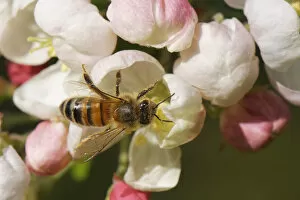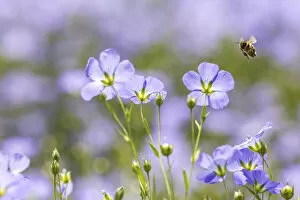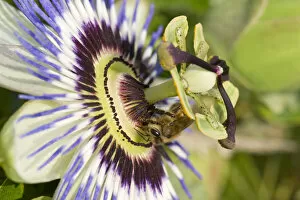Apis Mellifica Collection
"Apis mellifica: The Busy Life of the European Honey Bee" The European honey bee, scientifically known as Apis mellifera
All Professionally Made to Order for Quick Shipping
"Apis mellifica: The Busy Life of the European Honey Bee" The European honey bee, scientifically known as Apis mellifera, is a remarkable creature that plays a vital role in our ecosystem. From feeding on ice plant flowers to pollinating desert passionflowers, these bees are constantly on the move, ensuring the survival and growth of various plant species. In Danzante Island, Loreto Bay National Park, located in the stunning Sea of Cortez in Mexico during May, Western honeybees can be seen diligently pollinating Desert passionflower (Passiflora palmeri). This breathtaking sight showcases nature's intricate dance between bees and flowers. A fascinating composite image captures Wallaceas giant bee (Megachile pluto) alongside its smaller counterpart - the European honey bee. These two species coexist harmoniously despite their size differences. It serves as a reminder that every creature has an important place in our world. A close-up view of a Honey Bee comb reveals larvae nestled within cells in Norfolk, England. This glimpse into their hive highlights their complex social structure and how they work together for the greater good of their colony. From Monmouthshire to Brachyglottis sp. , these busy bees can be spotted flying from one flower to another with grace and precision. Whether it's nectaring on Bluebell flowers or extending its proboscis to extract nectar from Common rue (Ruta graveolens), Apis mellifera ensures that no pollen goes untouched. Their hard work doesn't stop there. With full pollen baskets after feasting on Balkan anemone (Anemone blanda) or freshly opened yellow Lantana (Lantana camara) flowers, these industrious insects continue collecting resources for their hive's sustenance. Even when it comes to Peony (Paeonia officinalis) pollen or delicious honeycomb found in Kiel, Germany, these honey bees leave no stone unturned.






































